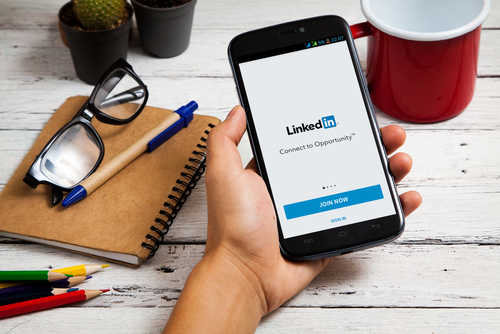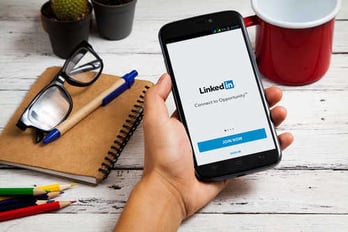LinkedIn Advertising - Advanced Best Practices
November 19, 2019


Everything in the LinkedIn ad set up is trying to get you to expand to bigger and bigger audiences. Why? Well it may be a little self-serving on LinkedIn’s part. When your audience expands over several industries, seniorities, job functions, etc., that means more revenue for LinkedIn.
But at TSL, we try to counter that approach, whittling down to your core target audience. After all, as your B2B tech marketing representative, our objective is your campaign performance. That means maximizing your advertising budget.
LinkedIn has a great platform, and their reps are mostly well-meaning. It’s one of the top-performing all-in-one advertising platforms used by millions of companies to boost their B2B marketing efforts. Its targeting options for advertising allow us to really zero in on the groups of people you want your advertising in front of — or in other words, your core target audience.
Below, we look at which of LinkedIn’s targeting fields will bring in the best results, as well as examples of when it might be necessary to trigger the others.
Target Market Segmentation: A little effort will save you money
When it comes to LinkedIn targeting options, more isn’t necessarily better. Targeting allows for granularity and attempts to sift out unnecessary recipients that could waste funds.
Typically, what TSL Marketing tries to do is find a sweet spot based on the budget. We're not going to set an audience of hundreds of thousands of people. We're trying to narrow down to the core set of people.
The sweet spot for LinkedIn digital advertising is audience segmentation: breaking your full target audience into more narrow segments so that you have better control over click and conversion costs. This also allows you more control over your messaging, as you’ll have the ability to segment your advertising copy based on the titles/seniorities/industries of a given segment.
For instance, while CIOs and top business leaders may be your ideal target, it could cost more to target them. They may log in to LinkedIn less, and they may be less willing to engage with an advertisement. You may see better advertising metrics by targeting lower-level employees. This approach allows you to understand the true costs of targeting certain segments with a certain message. It allows you to better come to terms with how much you value impressions/clicks/conversions in different audience segments.
So as much as we might want to target everyone at a job function like IT, the bid for a CIO click might be $40 a click, but a senior-level person in IT may be $10. Given this, TSL recommends breaking your audience targeting into segments.
CPC and Automated/CPM bids are based on competition for audience. If you target just one IT segment with all seniorities, for example, you run the risk of overpaying for junior-level contacts and maybe not even having a strong enough bid to pull in C-level contacts.
The most effective B2B targeting options for LinkedIn Advertising
Of all the criteria options on LinkedIn, in B2B marketing, two are absolute must-haves:
Company Targeting on LinkedIn
With B2B targeting, TSL is less concerned with demographics, interests, gender, and age, and is primarily focused on the types of companies and their size.
Within that targeting by company size and company industry, we also prioritize exclusions of company industries. While you’re trying to pick a broad category of who you want to go after in the Company section, sometimes there is a cross-industry that you don’t want.
LinkedIn Job Experience Targeting
The most important filtering parameters for job experience targeting in LinkedIn advertising are job titles or job function and seniority. Skill targeting can help your audience become even more precise. This is based off of skill endorsements in LinkedIn member profiles.
For instance, if you wanted to target IT Managers but were looking for people involved in the hardware side of the business and not the software side, you could layer on skills that involve IT hardware and negative-out skills or titles involved in software.
If you want to get even more granular, you could layer on years of experience or LinkedIn Group Membership. Adding on too many filters can lead to more precision, but it can limit your reach. While small-audience targeting can help ensure a right-fit ad audience, if your goal is volume and velocity, then you should limit the amount of filtering.
LinkedIn Location Targeting
Location targeting is required to set up any LinkedIn ad, but this can be challenging if your goal is to target in a radius or a specific smaller metro area. With LinkedIn, you can do either state, major metro, or country targeting. Not all cities and metropolitan areas are listed. In that case, soliciting an external list source of companies in that location or location radius from a third party is the better option. Then you can load that list of companies and attempt to target by the matched list results.
Ideal Audience Size for LinkedIn Advertising
While LinkedIn encourages a minimum of 400k people in your audience, you don’t need an audience that large to run a successful campaign. As long as you can find 300 LinkedIn members in your audience, you can run ads. That’s going to be a very small, very slow-running effort if you only have 300-1000 people. But if that’s your exact audience and you feel confident in your targeting, then go for it.
For more conversion volume or velocity, TSL recommends adding other near-fit audience segments and being very mindful of the performance of the segments.
Our TSL marketing team once built an audience of 390 people for a client. We needed to meet LinkedIn’s minimum without going beyond the client’s ideal audience. We layered on segments for director and operations.
The audience won’t get a lot of traction and it’s not going to be an active audience, but it’s going to be the exact audience the client wanted to get in front of. The client may see some results and we didn’t spend much money — it was refined enough to get at a low cost.
If you’re running sponsored content and you only find 300 or 500 people in your audience, think about other segments you want to go after. Don't arbitrarily expand that audience, but if you’ve zeroed in on who you want to go after, run some ads and see what your results look like.
What Should You Promote on Linkedin?
A B2B marketer can spend a lot of time segmenting out target audiences, but efforts will be fruitless if the ad content they’re putting out there doesn’t appeal to the personas they’re targeting.
Content that converts is going to be less about you and more about them. LinkedIn is a see channel and a me channel. People aren’t finding your ads based on any specific buying intent. You’re getting in front of them by precisely targeting them based on who they are.
People don’t log in to LinkedIn to solve big company problems, and they didn’t come to read how great your storage solutions are. They’re networking, they’re looking for new hires, they’re looking for jobs, they’re reading business news, they’re drawn in by who is looking at their profile.
Persona-Based Content
If you’re looking for conversion volume, try for content and offers that align with the personal and professional interests of the audience segments.
Ideas include:
- Content that helps them solve a business challenge
- Content about trends relevant to their industry
- Content about trends relevant to their profession
- Content that helps them gain knowledge or increase soft business skills
- Content related to professional advancement
Revealing Buying Intent With Content and Offers
Expect product offers or bottom-of-funnel offers to convert at much lower rates than content built with the persona’s self-interests in mind. Content related to a product or service or bottom-of-funnel offers that get people right into your sales funnel will have less volume, but in theory will show a greater indication that someone is more than just a right fit. Conversions on those types of offers and content show that someone may be firmly evaluating solutions like yours.
Measuring the ROI for LinkedIn Advertising
Regardless of your strategy, it’s important to have a good understanding of your target cost per acquisition of your various segments and your segment and content combinations. Think about the value of a conversion based on the segment and what they convert on. You may find that you’re happier getting a $500 cost per conversion on someone signing up for a consultation than a volume of $50 leads downloading a top-of-funnel/persona-based content piece.
The bottom line is to have a strategy in place that takes audience and the LinkedIn ad platform into account simultaneously. Think audience first and not offer first. If you know your audience well, you should be able to build successful campaigns that meet your marketing goals.
Read more information on LinkedIn advertising formats and audience interaction.
Contact us for help with your digital advertising needs.
